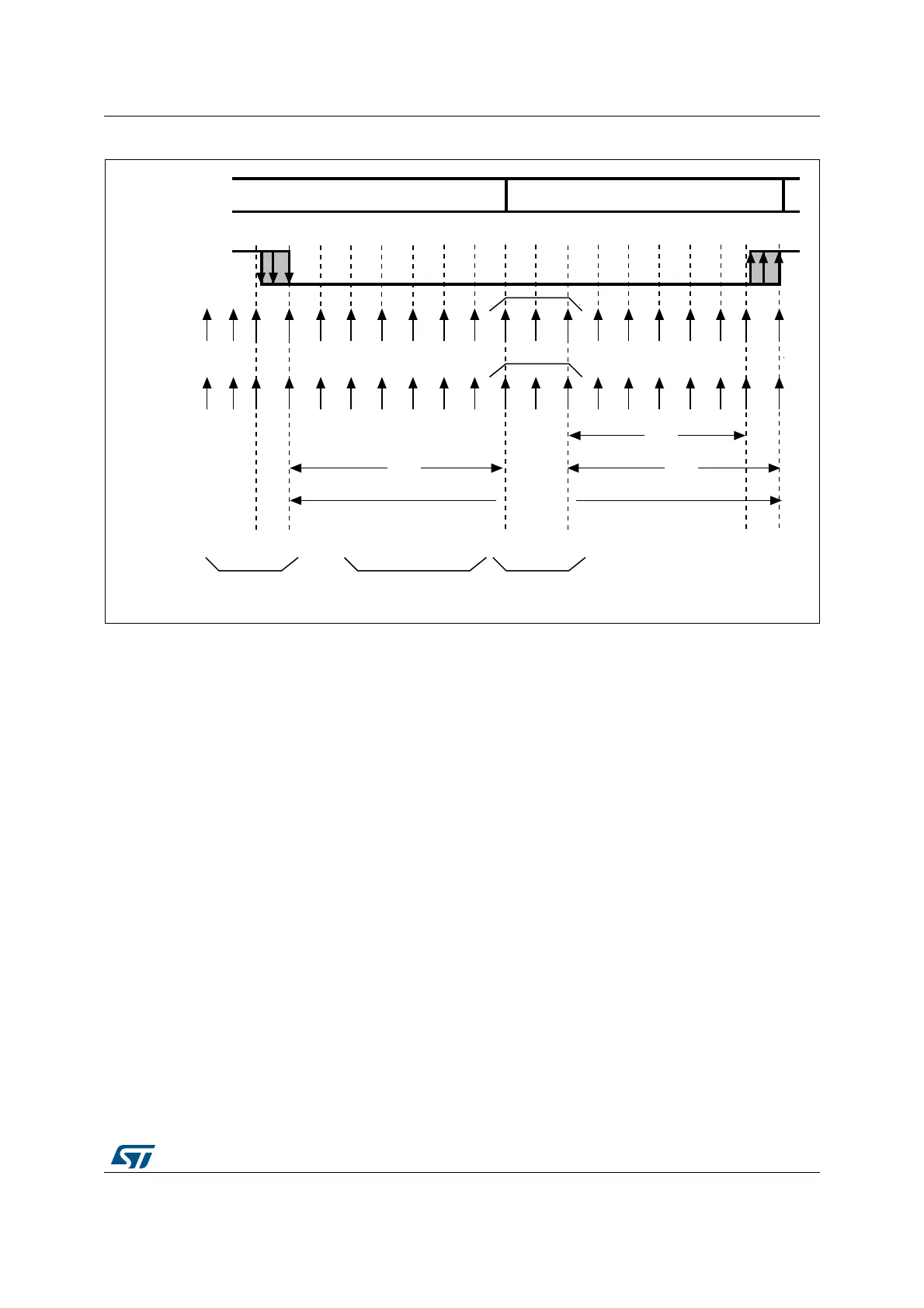RM0440 Rev 4 1605/2126
RM0440 Universal synchronous/asynchronous receiver transmitter (USART/UART)
1733
Figure 534. Start bit detection when oversampling by 16 or 8
Note: If the sequence is not complete, the start bit detection aborts and the receiver returns to the
idle state (no flag is set), where it waits for a falling edge.
The start bit is confirmed (RXNE flag set and interrupt generated if RXNEIE=1, or RXFNE
flag set and interrupt generated if RXFNEIE=1 if FIFO mode enabled) if the 3 sampled bits
are at ‘0’ (first sampling on the 3rd, 5th and 7th bits finds the 3 bits at ‘0’ and second
sampling on the 8th, 9th and 10th bits also finds the 3 bits at ‘0’).
The start bit is validated but the NE noise flag is set if,
a) for both samplings, 2 out of the 3 sampled bits are at ‘0’ (sampling on the 3rd, 5th
and 7th bits and sampling on the 8th, 9th and 10th bits)
or
b) for one of the samplings (sampling on the 3rd, 5th and 7th bits or sampling on the
8th, 9th and 10th bits), 2 out of the 3 bits are found at ‘0’.
If neither of the above conditions are met, the start detection aborts and the receiver returns
to the idle state (no flag is set).
01 0 X0 X 000 0 X XXXXX
Falling edge
detection
11
1 2 3 4 5 6 7 8 9 10 111213141516
X X X X X X X X 9 10 111213141516
6/16
7/167/16
X
At least 2 bits
out of 3 at 0
At least 2 bits
out of 3 at 0
One-bit time
Conditions
to validate
the start bit
Real
sample
clock
Ideal
sample
clock
RX line
RX state
Idle
Start bit
Sampled values
ai15471b

